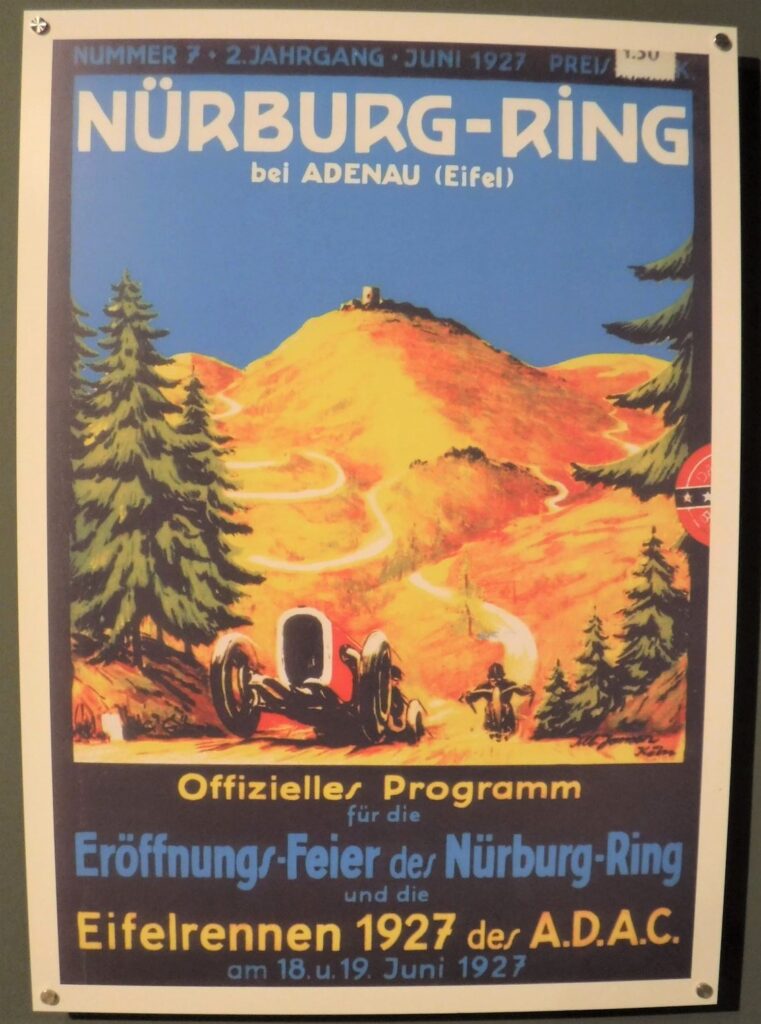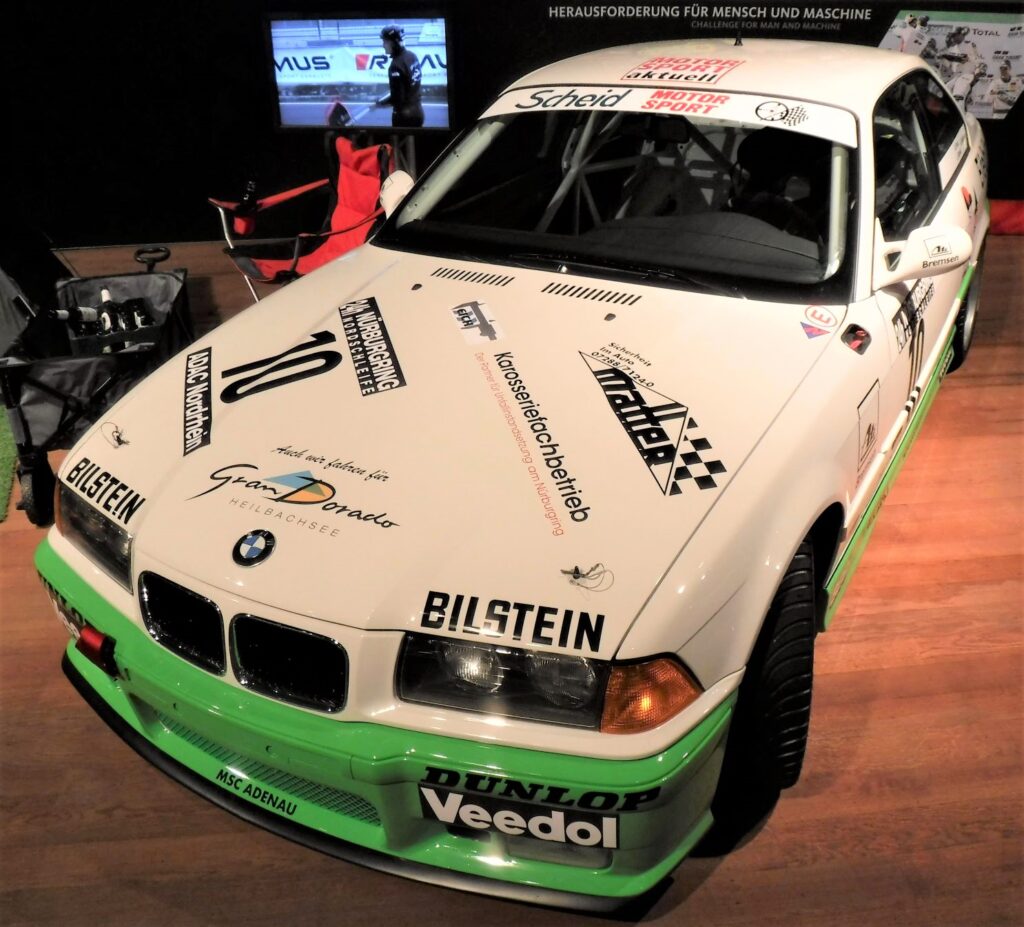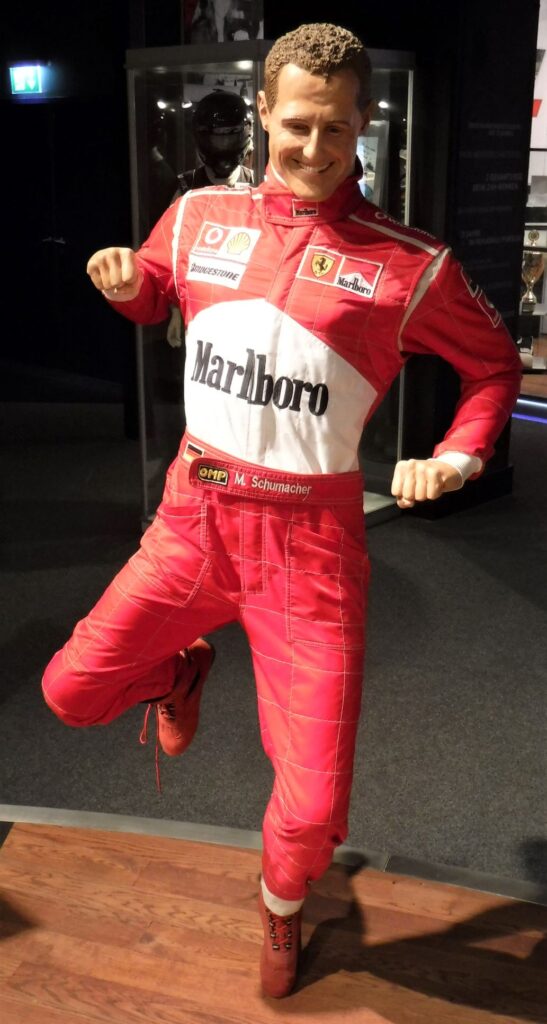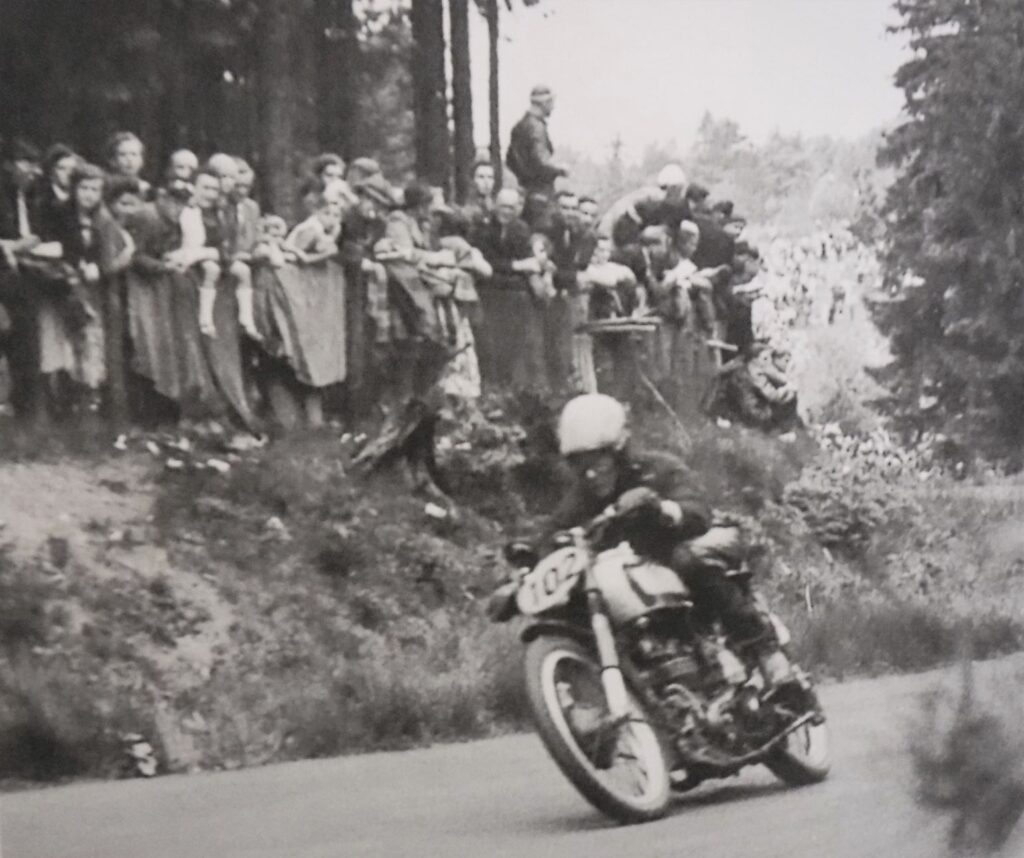Visiting the Green Hell, Part I

‘For a quick lap at the Nürburgring, you’ve probably experienced more in seven minutes…than most people have experienced in all their life in the way of fear, in the way of tension, in the way of animosity towards machinery and to a racetrack.’ Jackie Stewart, three-time F1 World Champion
When I was a kid, I used to love Australian touring car racing. Holden versus Ford (there were other makes in the mix, but they were a sideshow to the Big Two), cars that looked like the ones your Dad drove, and legendary drivers like Peter Brock, Allan Moffat, Dick Johnson and Alan Grice. I used to watch the Australian Grand Prix every year, but other than that, didn’t really follow Formula 1. In contrast, my mate Ed was big into it, and knew all the cars, drivers and circuits. One track he would speak of in hushed and reverant tones was Germany’s Nürburgring.
When I was at the Technology Museum Sinsheim, a room with muted light and a near sacred atmosphere was devoted to the beauty and the terror of the Nürburgring. Tracing its history, and it’s fearsome reputation, it was hard not to get sucked into the aura of the place. I figured whilst I was in the the west of Germany I should go and have a look.
After relocating to Koblenz, a large regional town on the Rhine, I spent some time planning my trip to the Nürburgring. I figured it was going to take me few days to really see the place, and that the easiest way to visit was by car. One gloomy day I caught the bus to the car rental agency and picked up my ride: a Fiat 500. I figured it would do for my 45 minute run to the Nürburgring, though it was a tight squeeze cramming my 193cm into the tiny car.
Rhineland-Palatinate is a beautiful part of Germany, with rolling hills, verdant paddocks and dark forest, and I enjoyed the drive despite persistent drizzle. The exit sign on the Autobahn to the Nürburgring featured a Formula 1 car, and I giggled with excitement as I punted the little Fiat down the off-ramp. Soon I got my first glimpse of the track; a twisting, turning, rising, falling black-top serpent winding its way through the forest. I whooped.

Following the signs, a few k’s later I arrived at the Nürburgring, which looked a little like a massive shopping complex. It was the start of several days of immersion into motor racing history, and getting a close look at one of the world’s most revered circuits.

Outside the main entrance to the circuit was a statue of Argentinian legend Juan Fangio, who won a lazy 5 Formula 1 World Championships between 1951 and 1957.

He also won the German Grand Prix at the Nurburgring three times, earning the mantle of ‘Master of the Nürburgring’.
Fangio was hugely successful on the racetrack despite driving a car made of solid brass
First stop was RingWerk, the Nürburgring’s official museum, which provided a great introduction to the history of the circuit.

The Museum explained that Dr Otto Creutz was the, ahem, driving force behind the creation of the Nürburgring. Creutzy was a local administrative official, and wanted to create a motor vehicle racing and test facility within his jurisdiction, thereby pumping some much needed economic stimulus into the Eifel district. Construction began in 1925, and 20 months later the approximately 28km circuit was compete.
The original circuit was comprised of the Nordschleife (north loop, 20.8km), Sudschleife (south loop, 7.7km), and Start und Zielscleife (start and finish loop, 2.2km). With 173 corners, and an elevation change of 340 metres, there was nothing else like it on earth.
‘When we arrived at the newly opened Nürburgring in 1927 we couldn’t believe our eyes. We had never seen anything like it before. In the middle of the Eifel Mountains, there was this road, a closed loop, with almost 180 bends covering a distance of 22 kilometres. It was a track with inclines that really made the engine gasp for breath, but it also had astonishingly beautiful views of the countryside, valleys and village.’ Rudolf Caracciola, winner of the first race held at the Nürburgring.

The first race conducted on the Nürburgring was actually contested by motorbikes, on 18 June, 1927.
There’s a bit of artistic licence in this poster, but regardless there are sections of the Nordschleife that are bloody steep
The cars debuted on the following day, with Rudolf Caracciola taking the chocolates in a Mercedes Type S, like this one on display at RingWerk.

1927 6-cylinder Mercedes Type S. Interestingly, this model was nicknamed the ‘White Elephant’ (presumably because it was white and elephantine in size) which in English slang refers to something that is ‘expensive, or that costs a lot…to keep in good condition, but that has no useful purpose and is no longer wanted‘1
During World War Two there was no racing at the Nürburgring. The Museum explained that the first event to be held postwar was a motorcycle race, where the admission price included ‘a voucher for bread, potatoes, sausages and wine’. Geez, you go to a sporting event these days and buying a pie and a beer costs you more than you pay to get in.
‘It’s going to be the Green Hell this weekend.’ Jackie Stewart prior to the rain-affected 1968 German Grand Prix at the Nürburgring

The 1960s was a golden era of racing at the Nürburgring, with legends of motorsport Stirling Moss, Graham Hill, John Surtees, Jim Clark Jack Brabham, Denny Hulme, Jackie Stewart and Jacky Ickx all winning the German Grand Prix title at the circuit.
The German Grand Prix slot car set was very popular with the youngsters
Amongst the cars on display at RingWerk Museum was this beautiful 1964 Cooper T72 Formule 3

‘Hard to drive, easy to die.’ How Austrian Formule 1 driver Jochen Rindt described the Nürburgring

The Nürburgring circuit may be beautiful, but it is also dangerous. Its history is one of glory and tragedy, with the circuit claiming the life of its first driver the year after it opened. Since then, a further 69 drivers/riders have died at the circuit during competition or official event practice. The RingWerk Museum explained that safety upgrades at the Nürburgring had not kept up with the increasing speed of racing cars, to the point where drivers and teams refused to race the 1970 German Grand Prix at the circuit. Improvements were subsequently made, and the Grand Prix returned to the Nürburgring the following year. However, as far as Grand Prix racing was concerned, the tracks days were numbered, and a near-fatal accident suffered by Nikki Lauda in 1976 closed the book on the Formula 1 at the track.

Heralding the next chapter of Nürburgring history, a new Formula 1 circuit was built at the southern end of the Nordschliefe, opening in 1984.
Smells like Team Spirit – Renault R25 F1 in which Fernando Alonso won the European Grand Prix at the Nürburgring in 2005
Despite the departure of F1 from the original circuit, other catorgories continued to race at the Nordschleife. This BMW M3 E36 is an exact replica of the car that won the 1996 Nürburgring 24 Hours. The three-person team that took the title was Johannes Scheid, Sabine Schmitz (nee Reck) and Hans Widman.

Sabine was the first woman to win the prestigous 24 Hours (and backed up the achievement by winning again in 1997), and is a true motorsport legend. In addition to the race-winning cars, RingWerk had a large display dedicated to the ‘Queen of the Nürburgring’.
‘Hannes, I won’t be coming in to change tyres after all. I’m lying on the roof.’ Sabine Schmitz, radio message after rolling her car during an endurance race at the Nürburgring


This Porsche 911 GT 3R won the Nürburgring 24 Hours in 2018. Seeing it up close, it’s an absolute beast.

Part of the RingWerk Museum display is a series of waxwork-style models of famous drivers, which I have to say is a bit kooky.
Mounted on a circular platform, visitors can get up close to their heroes, which is a little unsettling. Sure, there was some interesting information on each of the drivers, but the statues themselves….well…
Here’s Jim Hunt…

…Nikki Lauda and Stirling Moss, who apparently all liked to indulge in a little post-race Scottish country dancing.

And as for Michael Schumacher, well who knows what he’s up to in this pose…
RingWerk Museum featured a small display of bikes, paying homage to those mad enough to punt a motorcycle around the Nordschleife, or the new F1 track for that matter.
Nowadays, if you come off a race track, you are slowed down by run-off areas, gravel traps and tyre barriers. In the old days at the Nordschleife, you were slowed down by spectators and trees.
‘Pass the bread, potatoes, sausages and wine will ya?’


The bikes on display included Jon Ekerold’s 1980 Yamaha TZ 350, and Anton Mang’s 1980 Kawasaki KR 350
Sure they might look a little dated, but I still reckon they’d scare the leathers off you around the Northschleife
I had a great time exploring the RingWerk Museum; it certainly gave me a much greater appreciation of the history of the Nürburgring. I also found out that for a few euros you could tour the Nüburgring’s Formule 1 track, so I jumped at the chance.
I’ll let you know what I discovered.
1Cambridge Dictionary Definition
If you liked this post, you may also enjoy Technology Museum Speyer, Technology Museum Sinsheim
Leave a Reply